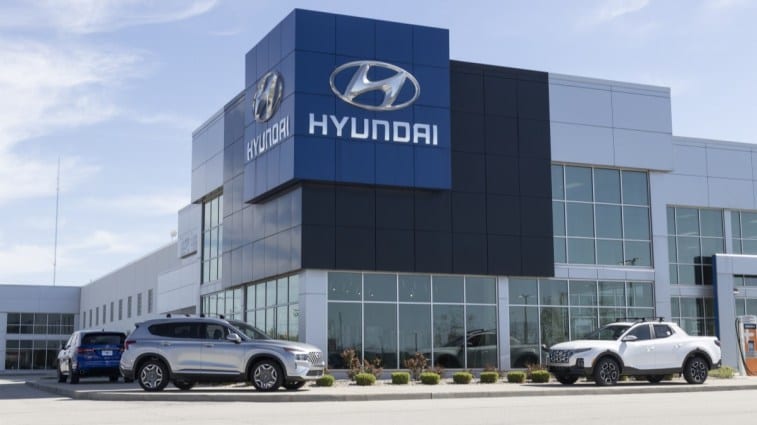
Americans paid $48,275 for the average new car in April. That figure is $14 below March’s upwardly-revised average of $48,289.
They remain higher than a year ago. But an old factor we all learned not to count on in the chaos of the last two years is now back and bringing prices down — incentives.
Those advertised discounts manufacturers use to help sell cars are back. Incentives made up 3.6% of the average new car sale price last month — the highest figure in a year.
“New-vehicle transaction prices are trending downward in 2023, which should feel like a breath of fresh air to buyers following the last few years of low supply and rapidly rising prices,” says Rebecca Rydzewski, research manager of Economic and Industry Insights for Cox Automotive.
Cox Automotive is the parent company of Kelley Blue Book.
“Now that inventory levels are starting to climb and manufacturers are increasing incentives, the market will respond accordingly,” Rydzewski adds.
Prices aren’t the only factor people consider when they car shop. “High auto loan interest rates are still a major issue for many buyers,” she notes. “But inventory and price trends are a positive in the market right now.”
Related: Fed Raises Rates a Tenth Time — What It Means for Car Shoppers.
Affordable Car Prices Increased Slightly
The average price paid for a non-luxury car increased slightly in April. Buyers paid an average of $44,750 — $461 higher than in March. That remains $381 below sticker price.
But the story isn’t the same at every dealership. Several non-luxury brands — including Chrysler, Ford, Honda, Nissan, Toyota, and Volkswagen — saw prices decline between 0.2% and 3.5%. Kia and Honda, with inventory levels well below the industry average, sold most cars for 3% to 4% over the manufacturer’s suggested retail price, or MSRP.
Related: Why the Used Car Market Is So Bad, and Won’t Get Better Soon
Luxury Prices Dropped
The average luxury buyer paid $64,144 for a new vehicle in April 2023, down $1,605 from March, and the first time transaction prices for luxury fell below $65,000 in 11 months.
Americans continue to buy a historically high percentage of fancy cars — luxury cars made up 18.2% of total sales last month. They peaked at 19.5% in February.
Large luxury cars and full-size luxury SUVs saw their prices rise in April. But entry-level luxury cars, high-end luxury cars, luxury compact SUVs, luxury mid-size SUVs, and luxury subcompact SUVs all showed price declines between 0.5% and 1.4%.
Electric Car Prices Continue to Fall
Electric car prices hovered near luxury car prices all last year but have begun to drop significantly. Electric vehicle (EV) prices dropped a jaw-dropping 7.5% during the month to reach $55,089 — $4,464 lower than just a month before.
The average transaction price for an EV in April was $10,096 lower than a year ago.
Continued price cuts at Tesla — which sells 6 out of every 10 EVs — are driving the decrease. “With average EV prices trending lower, we are seeing EV sales increase. For example, EV sales estimates in April were up by 26% year over year,” says Michelle Krebs, executive analyst at Cox Automotive.
Rivals are beginning to answer Tesla’s cuts. Ford recently announced a major price drop for its Mustang Mach-E EV.







